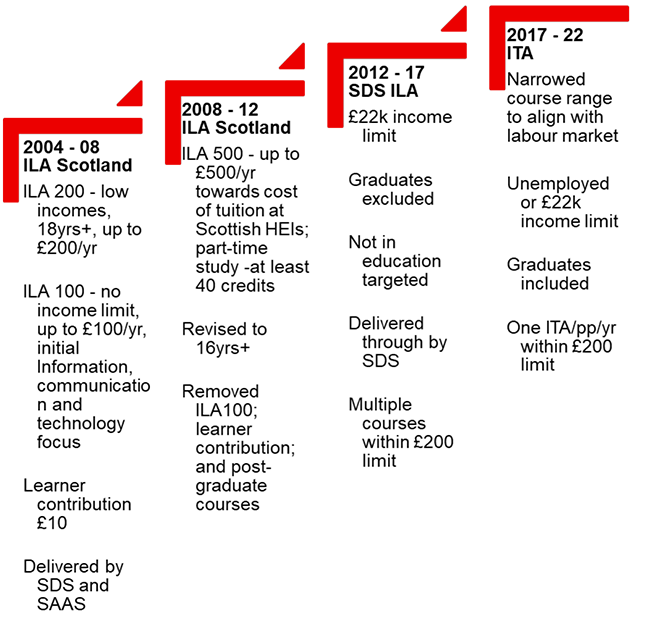Individual Training Accounts: evaluation
An evaluation of the Individual Training Account scheme.
Overview of ITAs in Scotland
Individual learning / training accounts (ILAs/ITAs) were first introduced by the Scottish Government in 2004. The current ITA programme is the latest model in the development of this programme. The previous models along with the key changes to eligibility and structure at each stage are presented below in Figure 1. The previous criteria in each column remains if a change is not noted.

Source: Scottish Government ILA Internal Review
There have been a series of internal evaluations and reviews conducted by the Scottish Government and SDS which have informed the changes made in the models above.
Following the review of the 2012 – 17 ILA programme there were some key changes which informed the current ITA model. These are outlined below.
Operational process
- The application process moved to a fully online process to improve simplicity and efficiency, and to shorten the time taken to process applications.
- Training providers check applicant eligibility, with support from SDS where required.
- Booking tokens/vouchers no longer used within the online system.
Programme positioning
- The range of courses for which an ITA could be used was restricted to make it more focussed on getting people into/ progressing in work, linking it to priorities around fair work, inclusive growth and Scotland's Labour Market Strategy.
- The emphasis was on providing training to improve the employability / skills of those who were unemployed or in low paid work.
- Higher value training was encouraged by limiting choice to one course per year, up to the £200 limit, rather than multiple courses of lower value.
Contact
Email: ceu@gov.scot
There is a problem
Thanks for your feedback